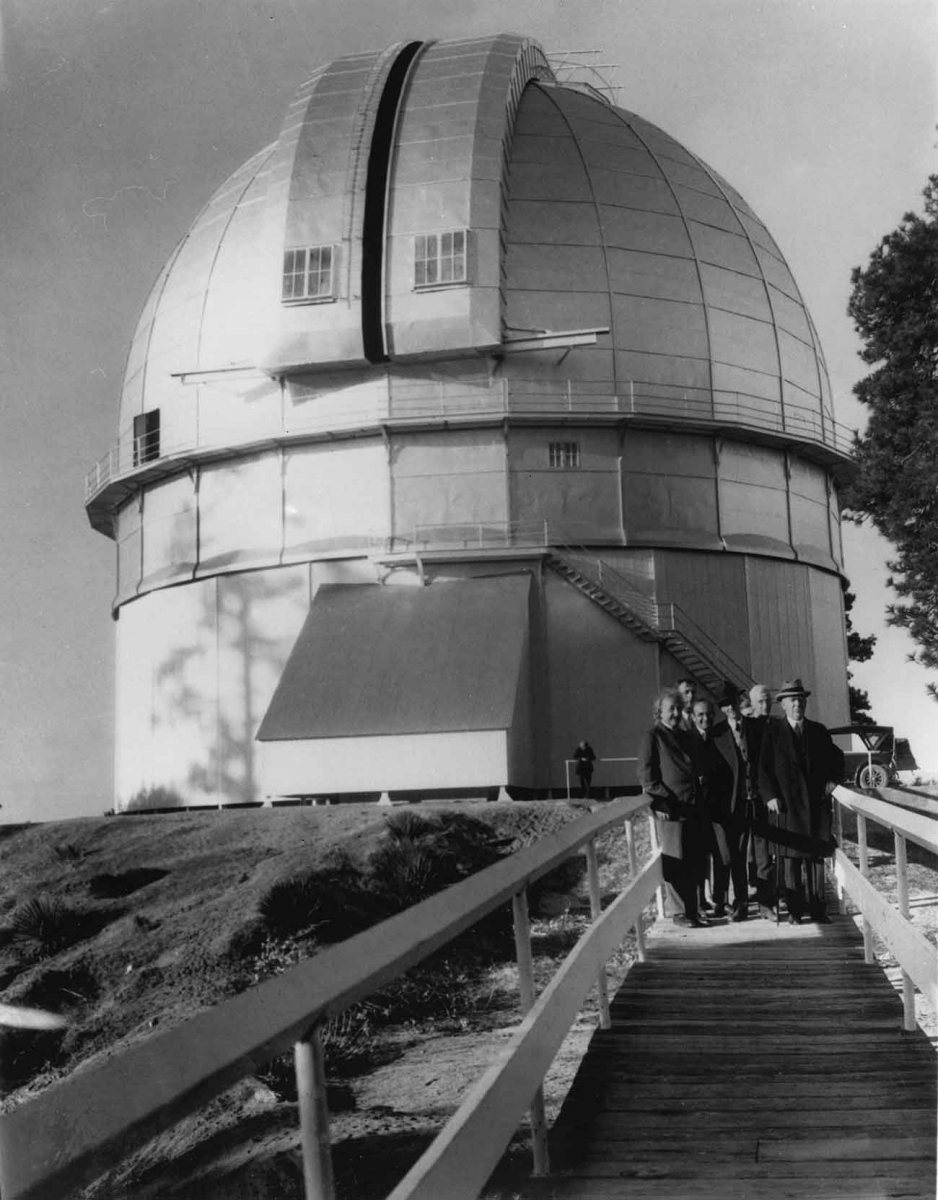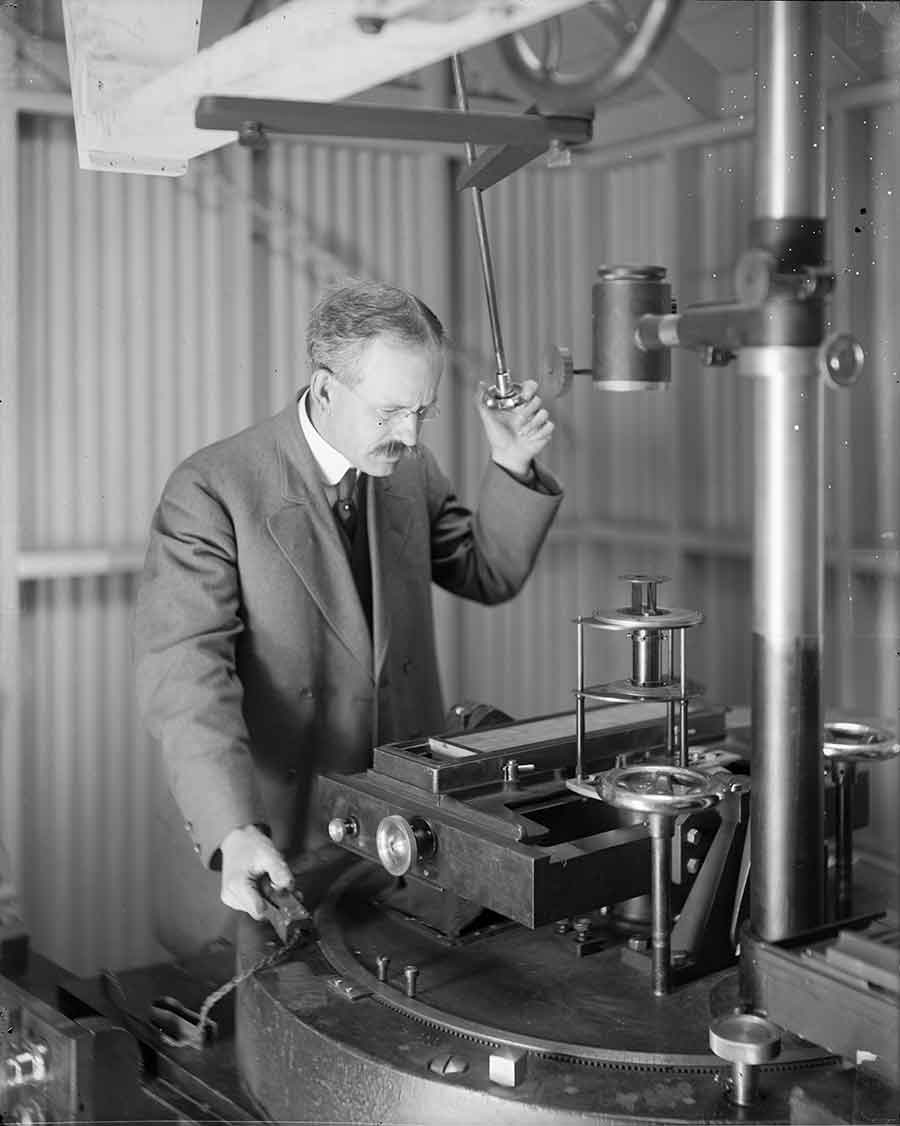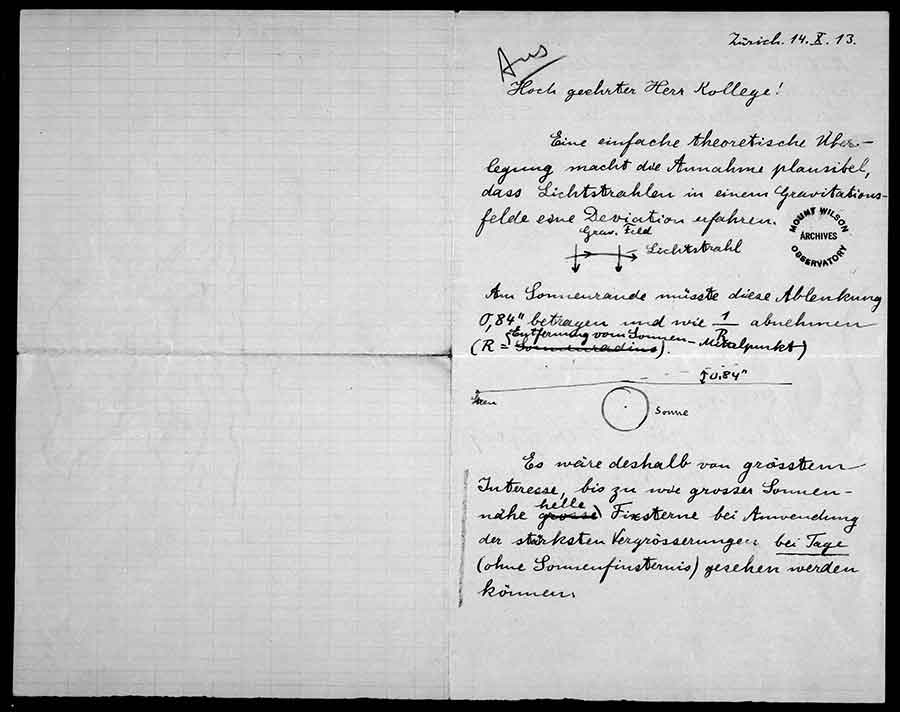
Scientists Albert Einstein, Edwin Hubble, Walther Mayer, Walter S. Adams, Arthur S. King, and William W. Campbell in front of the 100-inch telescope dome at Mount Wilson Observatory on Jan. 29, 1931. The Observatories of the Carnegie Institution for Science Collection at the Huntington Library, San Marino, Calif.
At a time when humanities programs are being slashed from college and university budgets, The Huntington and Caltech have joined forces to launch a new research institute focused specifically on the history of science and technology. Positioned to become the preeminent institute of its kind in the western United States, the Caltech-Huntington Advanced Research Institute in the History of Science and Technology will extend collaborative humanities research between a premier science and engineering university and a premier research library with extraordinary holdings in the field.
“The Huntington is already an important center for the study of the history of science,” said Steve Hindle, W. M. Keck Foundation Director of Research at The Huntington. “This new institute is a collaboration that will strengthen existing activities, add new programs, recruit additional research fellows, and ultimately lead to the appointment of new faculty. I am delighted that it will emphasize support for younger scholars, in particular. The creation of the institute represents a significant step forward for this critical area of intellectual pursuit.”

George Ellery Hale, renowned solar astronomer, at the spectrograph of the 60-foot solar tower telescope, Mount Wilson Observatory, ca. 1908. The Observatories of the Carnegie Institution for Science Collection at the Huntington Library, San Marino, Calif.
The Huntington’s history of science collection is one of the largest and most important in North America. Its diverse materials document Western practice and theory in science, medicine, technology, and a variety of subdisciplines. Holdings range widely, from a 13th-century Ptolemy Almagest manuscript (an astronomy treatise) to the papers of Edwin Hubble (1889–1953), the astronomer who discovered the universe is expanding. They also include the Carnegie Observatories’ Mount Wilson Observatory Collection, with more than 1,000 books on the history of astronomy and physics, as well as directors’ papers and photographic archives.
The arrival of the Burndy Library in 2006 enormously magnified the depth and scope of The Huntington’s holdings in science and technology. Containing 67,000 rare books and manuscripts, the Burndy’s great strengths include the history of early mathematics and physics, with the largest assemblage of Isaac Newton materials outside England, the Grace K. Babson Collection, on deposit from Babson College. Other topics well represented include the history of electricity, bridge and water engineering, metallurgy, color theory and practice, and aeronautics.

Letter from Albert Einstein to George Ellery Hale, Oct. 14, 1913. In this letter, Einstein asks Hale, director of the Mount Wilson Observatory, whether it would be possible to measure starlight bending around the sun during the day. The Observatories of the Carnegie Institution for Science Collection at the Huntington Library, San Marino, Calif.
Caltech and The Huntington have had a close relationship for nearly a century, since Caltech’s George Ellery Hale encouraged railroad magnate Henry E. Huntington to transform his library, art, and botanical collections into a research center. In recent years, collaborations have ranged from interdisciplinary research projects to the establishment of a visiting professorship.
The launch of this new institute has been made possible by a generous gift from Stephen E. Rogers, a member of The Huntington’s Board of Overseers and president of the Caltech Associates, a support group of the university.
Kevin Durkin is editor of Verso and managing editor in The Huntington’s Office of Communications and Marketing.
